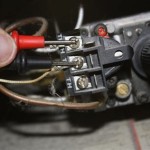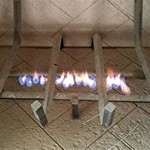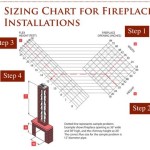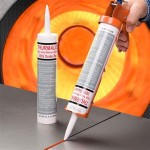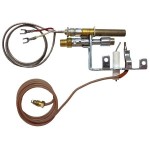Vented Gas Fireplace Insert Efficiency: A Comprehensive Guide
Vented gas fireplace inserts are a popular choice for homeowners looking to improve the efficiency and aesthetic appeal of their existing fireplaces. Unlike traditional wood-burning fireplaces, vented gas fireplace inserts offer numerous advantages, including increased energy efficiency, cleaner burning, and easier operation. This article delves into the intricacies of vented gas fireplace insert efficiency, exploring key factors that influence their performance and providing insights for maximizing heat output and minimizing energy consumption.
Understanding Vented Gas Fireplace Insert Efficiency
Efficiency in a vented gas fireplace insert refers to its ability to convert the energy from the burning gas into usable heat. The efficiency rating of a vented gas fireplace insert is typically expressed as a percentage and represents the amount of heat produced relative to the amount of gas consumed. For instance, a fireplace insert with a 70% efficiency rating will convert 70% of the energy from the gas into heat, while the remaining 30% is lost through the vent and other processes.
Various factors influence the efficiency of vented gas fireplace inserts, including:
- Fireplace Design: The design of the fireplace insert, including the size and shape of the firebox, the type of burner, and the location of the vents, significantly affects its efficiency.
- Combustion Technology: Modern vented gas fireplace inserts incorporate advanced combustion technologies, such as sealed combustion systems and variable-speed blowers, to enhance efficiency by optimizing the burning process and distributing heat more effectively.
- Installation Practices: Proper installation is crucial for maximizing the efficiency of a vented gas fireplace insert. This includes ensuring that the insert is correctly sized for the fireplace, the vent system is adequately sealed, and the flue is properly connected.
- Fuel Type: The type of gas used can also impact efficiency. Natural gas generally burns more cleanly and efficiently than propane.
- Maintenance Practices: Regular maintenance, including cleaning the glass, burner, and flue, can significantly improve the efficiency of a vented gas fireplace insert by ensuring optimal airflow and combustion.
Enhancing Efficiency of Vented Gas Fireplace Inserts
Homeowners can implement several strategies to maximize the efficiency of their vented gas fireplace inserts:
1. Choosing the Right Insert
Selecting an insert that is appropriately sized for the fireplace is crucial. Oversized inserts can lead to inefficient burning, while undersized inserts may not adequately heat the room. Consult with a qualified fireplace professional to determine the optimal size for your fireplace.
2. Installing a Gas Fireplace Insert Correctly
Proper installation is essential for maximizing efficiency and safety. This includes ensuring that the insert is correctly positioned within the fireplace, the vents are sealed adequately, and the flue is connected correctly. Hiring a qualified installer ensures that the installation meets all applicable building codes and standards.
3. Utilizing Efficient Combustion Technologies
Modern vented gas fireplace inserts incorporate advanced combustion technologies, such as sealed combustion systems and variable-speed blowers. Sealed combustion systems draw fresh air from outside the home for combustion, minimizing the loss of heated air from the house through the fireplace. Variable-speed blowers distribute heat more effectively, ensuring that the room is heated evenly.
4. Optimizing Gas Usage
Adjusting the gas flow rate can significantly impact the efficiency of a vented gas fireplace insert. A qualified fireplace professional can help determine the optimal gas flow rate for your specific model. Additionally, using natural gas instead of propane generally leads to higher efficiency.
5. Implementing Regular Maintenance
Regular maintenance, such as cleaning the glass, burner, and flue, is crucial for ensuring optimal airflow and combustion. This will also prevent the buildup of creosote, which can reduce efficiency and pose a fire hazard. Consult the manufacturer's instructions for specific maintenance recommendations.
Vented gas fireplace inserts offer an efficient and convenient way to enjoy the ambiance of a fireplace while maximizing heat output and minimizing energy consumption. By understanding the factors influencing efficiency and implementing the strategies outlined above, homeowners can optimize the performance of their vented gas fireplace inserts, ensuring both comfort and cost savings.

Freestanding High Efficiency Direct Vent Gas Fireplaces Inserts Stoves Godby Hearth And Home

Gas Fireplace Faq Fireplaces Direct Learning Center

What Are The Best Ways To Vent A Gas Fireplace Zoroast

Understanding Gas Efficiency Logs Vs Inserts

40 Efficient Indoor Direct Vent Gas Log Fireplace By Superior Drt3000 Series Drt3040 C F3895 F3896 F3897 F3898

Rushmore 30 Direct Vent Fireplace Insert Fine S Gas

Pros And Cons Of Direct Vent Gas Fireplaces Tarantin Industries

The Top 3 Reasons To Choose A Gas Insert Over Log Set Hearthside Hearth Blog
Gas Fireplace Venting Explained Heat Glo

Freestanding High Efficiency Direct Vent Gas Fireplaces Inserts Stoves Fireplace Valleyresorts Co

